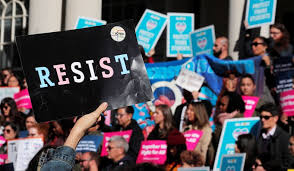Source: ricochet.com
While the latest on impeachment continues to dominate headlines, two news items should have our interest before they go the way of the 24-hour cycle.
First, there’s the new episode of “Marvel’s Hero Project”—available on Disney Plus—that celebrates a 12-year-old boy who identifies as a girl and testified before New Jersey’s legislature in favor of a bill mandating an “LBGTQ history” curriculum to be taught throughout the state’s public schools.
And second, the announcement from Merriam-Webster that it has chosen “they” as its word of the year, celebrating the plural pronoun’s newfound utility as a referent to those declining the more traditional (read “biologically correspondent”) indicators like he, him, she, and her.
As merely the latest examples of a steady cultural drumbeat—the American Dialect Society named “they” its top word back in 2015—the news hooks from Disney and Merriam-Webster function more to nudge up the volume than introduce anything new, much less noteworthy. Yet, even as corporations and celebrities dial up their efforts to mainstream gender identity ideology, the gap continues to widen between the currency of woke virtue-signaling and the reality on the ground.
One way to gauge the width of that gap is to look at the way victims of gender identity ideology are treated by a culture increasingly sold-out to the idea that a man who feels he is a woman can simply become one with the help of irreversible surges of cross-sex hormones and sometimes-endless cycles of surgeries.
And by victims, I’m not talking about female athletes converted into spectators, professors and teachers who find their speech censored—and their jobs threatened if they dissent from the new orthodoxy, or even the specter of female survivors of rape, sex trafficking, and domestic violence forced to sleep alongside biological males because of gender ideology.
No, I have in mind those who have personally bought into the central promise of gender identity theory only to find that living as the opposite sex wasn’t bringing them closer to happiness—but in many cases, much further away. Though many of these individuals were once hailed as heroes, they can expect to find themselves facing staunch opposition, hatred, and—perhaps most painful of all—silence and indifference if they decide to “de-transition” and pursue a life that aligns with their biological sex.
Perhaps the best-known “de-transitioner” is a man named Walt Heyer. As he writes at USA Today, Heyer’s discomfort with his sex dated back to the time when he was a 4-year-old boy whose grandmother dressed him in girls’ clothes and lavished praise on him as such. If Heyer’s account sounds familiar, it’s likely because it bears a striking resemblance to that of James Younger, a 7-year-old boy whose mother insists that he is a girl.
At 42, Walt began living as “Laura”—an eight-year experience that cost him his marriage, his job, and left him permanently disfigured. Today, Heyer and his wife (he remarried in the 1990s) spend their life helping men and women grapple with the lasting damage of irreversible hormones, surgeries, and relational upheaval brought on by living as the opposite sex.
While Heyer and others—including James Shupe and Sydney Wright—are courageously telling their stories in the public square, there’s no question they’re fighting an uphill battle in a culture increasingly deluged with messages promoting gender identity ideology—much of which, like the Disney Plus project, is aimed at young children.
That these messages are aimed at children is especially troubling. According to the American Psychological Association’s “Diagnostic and Statistical Manual of Mental Disorders” (DSM-5), up to 97 percent of boys and 88 percent of girls experiencing gender dysphoria will grow out of gender-related discomfort by the time they reach adulthood. Meanwhile, available research indicates an alarming increase in mental health problems and suicide attempts among those who follow through with so-called gender reassignment.
Yet, as Carey Callahan—a woman who previously lived as a man and who worked at gender clinic—recently wrote at The Economist a patient’s mental health is often an afterthought for gender clinics. To illustrate, Callahan opens her piece telling the story of “Betty,” a patient whose violent mental health issues stayed largely unaddressed while under the clinic’s care.
“In the case of Betty, I felt that the clinic where I worked wasn’t sufficiently concerned whether her mental disorder created delusions that often controlled her life.” Callahan writes. “The medical staff’s attitude towards Betty and many of the other patients who were receiving hormones while managing (or failing to manage) severe mental illness was a profound lack of interest about whether one affected the other.”
Heyer, who eventually found life-changing help through counseling and his local church, sounds a similar note: “Underlying issues often drive the desire to escape one’s life into another, and they need to be addressed before taking the radical step of transition.”
As parents, grandparents, friends, and neighbors, we do well to hold our grip on the fact that—in spite of the spin from cultural influencers like Disney Plus and Merriam-Webster—ideas and ideologies have real-life consequences. Or in this case, victims.
